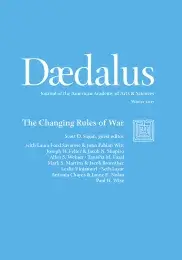The Epidemiologic Challenge to the Conduct of Just War: Confronting Indirect Civilian Casualties of War
Most civilian casualties in war are not the result of direct exposure to bombs and bullets; they are due to the destruction of the essentials of daily living, including food, water, shelter, and health care. These “indirect” effects are too often invisible and not adequately assessed nor addressed by just war principles or global humanitarian response. This essay suggests that while the neglect of indirect effects has been longstanding, recent technical advances make such neglect increasingly unacceptable: 1) our ability to measure indirect effects has improved dramatically and 2) our ability to prevent or mitigate the indirect human toll of war has made unprecedented progress. Together, these advances underscore the importance of addressing more fully the challenge of indirect effects both in the application of just war principles as well as their tragic human cost in areas of conflict around the world.
Health workers are the ultimate inheritors of failed social order. Sooner or later, a breakdown in the bonds that define collective peace, indeed that ensure social justice, will find tragic expression in the clinic, on the ward, or in the morgue. This reality has always given health workers the opportunity, if not the responsibility, to provide a human narrative of suffering in addition to the technical requirements of care and comfort. Yet, for the most part, this narrative has not been adequately crafted or at least advanced in the deliberation of what has always been the most extreme challenge for health workers: the human consequences of war.
This discussion attempts to translate a health worker’s narrative of war into a format that directly addresses the moral framework that justifies and constrains a just war. This narrative is told not by anecdote but by epidemiology, a story whose contours are shaped not by individual histories but by patterns of illness and death in large civilian populations. While these patterns have been noted since at least the time of Thucydides, there have been two essentially technical developments that challenge traditional appraisals of just war: 1) our ability to count the dead and injured has improved dramatically and 2) our capacity to intervene and prevent the medical consequences of war has advanced at an unprecedented rate. Technical progress permits more capable documentation, revealing a reality that was long sensed but rarely quantified. Technical progress has also generated an expanding capability to uncouple what war ultimately conveys to human suffering. This discussion suggests that together, these dual technical capabilities – documentation and efficacy – not only permit but compel a more comprehensive accounting of war's human impact. My argument is that while technical innovation has clearly altered both the power and precision of the tools of war, it has also altered our understanding of the human impact of war and, significantly, the moral requirements for its mitigation in the real world. . . .
To read the full essay, access the PDF.
